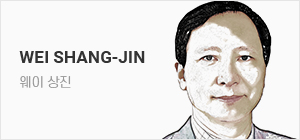


How can countries avoid or escape the “middle income trap” as they develop and grow? One possible answer that emerges from this year‘s World Development Report (WDR) from the World Bank is that any country finding itself stuck at this level of around 10-20% of US GDP per capita (that is, in the range of $1,136 to $13,845) should follow South Korea’s example. The country‘s strategy since the 1960s illustrates what the Bank labels the ’3i‘ approach: “investment, infusion and innovation”.
What does the Bank mean by the 3is? The first stage of development starting from low income levels is significant investment. Poor countries have notably low levels of capital, so increasing the capital stock is the foundation for higher labour productivity and incomes. This includes both public investment in infrastructure projects in particular and private business investment, and formed South Korea‘s policy aim in the 1960s.
The second phase is infusion (also termed ‘diffusion’ in the economics literature), or the introduction of an industrial policy encouraging businesses to adopt more sophisticated technologies. This often builds on significant domestic companies but may require them to shift their activities toward higher value-added production. One example is Samsung, shifting first from low value added production to manufacturing TV sets (licensed from Japanese manufacturers) for the domestic market and other nearby markets.
The third phase is then for leading companies to increase their R&D spending, and for the country to invest in higher education, so the country can reach the technology frontier for some products and expand its export markets ― just as Samsung has with smartphones for example. The report notes that other countries, such as Chile and Poland, have managed similar trajectories. But many middle income countries remain stuck.
| ||
| Cover of World Development Report 2024 |
The strategy sounds simple but the practice is anything but. One reason it is difficult to implement is that shifting the production structure of the economy creates losers as well as winners. Everybody is happy if the government provides more infrastructure but firms in traditional sectors may decline if they cannot or do not adopt new technologies in the “infusion” stage.
Economist Joseph Schumpeter famously described the process of economic growth as one of creative destruction. The WDR argues that one cause of the middle income trap is that many countries have policies that prevent the “destruction” part of the process. These can include lack of competition enforcement, financial frictions, subsidies to SMEs, or trade protectionism. The report notes that South Korea avoided this, ensuring that its markets remained contestable, and shifting away from the earlier focus on large firms only. For, as these examples illustrate, setting appropriate policies can involve tricky judgments: how should supporting some leading companies to transition to more advanced types of production sit alongside competition policy that makes domestic markets in general more efficient? There are significant trade-offs involved.
The challenge is all the greater because the infusion phase requires a more skilled workforce, so education policies need to be aligned with industrial policies, and newly minted graduates and technicians must be able to access good jobs. A failure to match new cohorts of skilled young workers with adequate employment is a recipe for social or political trouble.
A second reason for difficulty in putting the 3i strategy into practice is that implementing it successfully depends on the specifics of each country‘s situation. Governments introducing a strategy to change significantly the structure of the economy need to have a solid understanding of what economic strengths exist that policies can build on, the agility to take advantage of new opportunities, and the political ability to overcome vested interests. Each of these will vary enormously between countries, and luck will be part of every success story too.
| ||
| When it comes to economic growth, many countries have fallen into the ''middle-income trap'' where they are unable to move forward, let alone overcome their limitations. Economists argue that creative disruption, while uncomfortable, is essential to breaking free from traps and achieving miraculous progress. The subway in Beijing, China, was full of citizens on the 2nd of last month. [AFP] |
What‘s more, there are risks in making the development strategy seem too simple. The different stages will overlap, so the policy requirements cannot be neatly divided between them. Traditional sectors may remain important for a long period to provide employment for large numbers of people, and for reasons of equity and social stability governments need to avoid the emergence of excessive inequalities between regions or groups. The process of adoption of new technologies can take decades, and the economy will often have a combination of frontier firms and slow adopters.
And while the policy mix might shift from encouraging investment to boosting domestic consumption ― as many economists are now urging on China ― investment will remain important throughout. New technologies are almost always at least partly embodied in new capital equipment, and may require continued infrastructure investment. For instance, the digital and AI revolution needs highly capital-intensive data centres with large energy and water demands. For that matter, technological innovation brings a need for new types of infrastructure too ― think of renewable energy generation or fibre-optic cables ― and for investment in social infrastructure such as universities or health facilities. These latter are not traditional physical capital but can certainly be thought of as essential investments in future economic prospects.
Putting the necessary policy mix in place after the first stage is therefore not easy and requires a political system that can learn from mistakes and adapt if necessary. This explains the existence of the middle income trap. The WDR observes that 31 countries transitioned from middle to high income levels between 1990 and 2019, leaving many stuck in the trap. Many of these have high debt burdens and also face significant headwinds from climate change. Escaping the trap is relatively rare ― but has a dramatic impact, hence often being described as a growth ‘miracle’.
Still, the 3i strategy is a useful way of thinking about how the needs of economies change and the challenges involved in setting policies. It holds useful lessons for some high income economies as well, many of which have regions stuck in their own middle income trap. Creative disruption is the process that generates growth and development, uncomfortable but essential to move from trap to miracle.



창조적 파괴, 경제 기적을 위한 필수 과정
국가들이 발전하고 성장하는 과정에서 ‘중진국 함정’을 피하거나 벗어나는 방법은 무엇일까. 올해 세계은행의 세계 개발 보고서(WDR)에서 제시된 한 가지 해답은 1인당 국내총생산(GDP)이 미국의 약 10~20% 수준(1136달러에서 1만3845달러 사이)에 머물러 있는 국가들이 한국의 사례를 따르는 것이다. 1960년대 이후 한국의 전략은 세계은행이 ‘3i’ 접근법이라고 명명하는 ‘투자·주입·혁신’의 좋은 예시로 자리 잡고 있다.
그렇다면 세계은행이 말하는 3i는 무엇을 의미할까. 개발의 첫 단계에서 특히 저소득 수준에서 시작할 때는 상당한 투자가 필요하다. 가난한 국가는 자본이 현저히 부족하므로 자본 축적을 늘리는 것이 노동 생산성과 소득을 높이는 기반이 된다. 여기에는 특히 인프라 프로젝트에 대한 공공 투자와 민간 기업의 투자가 포함되며, 이는 1960년대 한국의 정책 목표를 형성하는 데 중요한 역할을 했다.
두 번째 단계는 주입(경제학 문헌에서는 ‘확산’이라고도 함) 단계로, 이는 기업이 더 정교한 기술을 도입하도록 장려하는 산업 정책을 의미한다. 이 단계는 주로 주요 국내 기업을 기반으로 하며, 이들이 더욱 높은 부가가치 생산으로 전환해야 할 필요가 있을 수 있다. 예를 들어 삼성은 처음에는 낮은 부가가치 생산으로 시작했지만, 일본 제조업체로부터 라이선스를 받은 TV 세트를 제조하면서 국내 및 인근 시장을 대상으로 활동을 전환했다.
세 번째 단계에서는 선도 기업들이 연구개발(R&D) 지출을 늘리고, 국가가 고등 교육에 투자해 일부 제품에서 기술적 우위를 확보하고 수출 시장을 확대해야 한다. 예를 들어, 삼성이 스마트폰으로 이러한 성과를 이뤄냈다. 보고서는 칠레와 폴란드와 같은 다른 국가들도 유사한 발전 경로를 따라가고 있다고 언급한다. 그러나 많은 중진국은 여전히 이 단계에 머물러 있다.

이 전략은 간단해 보이지만 실제로 구현하기는 결코 쉽지 않다. 그 이유 중 하나는 경제의 생산 구조를 전환하는 과정에서 승자뿐만 아니라 패자도 발생하기 때문이다. 정부가 더 많은 인프라를 제공하면 모두가 만족할 수 있지만, ‘주입’ 단계에서 새로운 기술을 채택하지 못하거나 꺼리는 전통적인 부문의 기업들은 쇠퇴할 수 있다.
경제학자 조지프 슘페터는 경제 성장의 과정을 창조적 파괴의 과정으로 설명한 것으로 유명하다. 세계 개발 보고서(WDR)는 중진국 함정의 원인 중 하나로 많은 나라가 이 ‘파괴’ 과정을 저해하는 정책을 채택하고 있다는 점을 지적한다. 이러한 정책에는 경쟁 제한, 금융 마찰, 중소기업에 대한 보조금, 또는 무역 보호주의 등이 포함될 수 있다. 보고서는 한국이 이러한 문제를 피하면서 시장의 경쟁력을 보장하고, 초기의 대기업 중심 정책에서 벗어났음을 강조한다. 이와 같은 사례에서 알 수 있듯, 적절한 정책을 설정하는 것은 상당한 판단력을 요구한다. 일부 선도 기업이 보다 발전된 생산 방식으로 전환하도록 지원하면서도, 국내 시장 전반의 효율성을 높이는 경쟁 정책을 어떻게 조화시킬 수 있을까. 여기에는 상당한 상충 관계가 존재한다.
이 과제가 더욱 어려운 이유는 주입 단계에서 더 높은 수준의 숙련된 노동력이 필요하기 때문이다. 따라서 교육 정책은 산업 정책과 긴밀히 연계돼야 하며, 갓 대학을 졸업한 이들과 기술자들이 양질의 일자리를 확보할 수 있어야 한다. 만약 새로 배출된 숙련된 젊은 노동자들이 적절한 일자리를 찾지 못한다면, 이는 사회적 또는 정치적 문제로 이어지는 지름길이다.
3i 전략을 실천하기 어려운 두 번째 이유는 각 나라의 상황에 따라 성공적인 실행 방식이 달라지기 때문이다. 경제 구조를 크게 변화시키려는 전략을 도입하는 정부는 정책의 기반이 될 경제적 강점을 명확히 파악하고 새로운 기회를 활용할 수 있는 유연성을 갖추고 기득권을 극복할 수 있는 정치적 역량을 갖춰야 한다. 이러한 요소들은 국가마다 크게 다를 것이며, 모든 성공 사례에는 분명 어느 정도의 운도 작용할 것이다.

더 나아가, 개발 전략을 지나치게 단순화하는 것은 위험할 수 있다. 각 단계가 서로 겹치기 때문에 정책 요구 사항을 명확하게 구분하기 어렵다. 전통적인 부문은 여전히 많은 사람에게 일자리를 제공하기 위해 오랫동안 중요할 수 있으며, 정부는 형평성과 사회적 안정을 위해 지역 간 또는 집단 간의 과도한 불평등이 발생하지 않도록 해야 한다. 새로운 기술이 도입되기까지는 수십 년이 걸릴 수 있으며, 그 동안 경제는 종종 선도 기업과 후발 기업이 혼재하는 양상을 띨 것이다.
많은 경제학자가 현재 중국에 권장하고 있는 것처럼, 정책 조합을 투자 장려에서 국내 소비 촉진으로 전환할 수는 있지만, 전체적으로 여전히 중요한 것은 투자다. 새로운 기술은 거의 항상 부분적으로라도 새로운 자본 장비에 구현되며, 지속적인 인프라 투자가 필요할 수 있다. 예를 들어, 디지털 및 인공지능 혁명은 고도로 자본 집약적인 데이터 센터를 필요로 하며, 이는 많은 에너지와 물을 소모한다. 또한, 기술 혁신은 재생 에너지 발전이나 광섬유 케이블 같은 새로운 유형의 인프라뿐만 아니라 대학이나 의료 시설 같은 사회적 인프라에 대한 투자도 요구한다. 이러한 사회적 인프라는 전통적인 물적 자본은 아니지만, 미래 경제 전망을 위한 필수적인 투자로 간주할 수 있다.
따라서 첫 번째 단계 이후에 필요한 정책 조합을 마련하기는 쉽지 않으며, 실수로부터 학습하고 필요에 따라 적응할 수 있는 정치 시스템이 요구된다. 이것이 바로 중진국 함정이 존재하는 이유다. 세계 개발 보고서(WDR)에 따르면, 1990년부터 2019년까지 31개국이 중진국에서 고소득 국가로 전환했지만, 여전히 많은 국가가 이 함정에 갇혀 있다. 이들 중 다수는 높은 부채 부담을 안고 있으며, 기후 변화로 인한 심각한 역풍에도 직면해 있다. 이 함정을 벗어나는 일은 비교적 드물지만, 그 영향은 극적이어서 종종 성장 ‘기적’으로 불린다.
그럼에도 불구하고 3i 전략은 경제적 필요가 어떻게 변화하는지, 그리고 정책 설정에 어떤 도전과제가 수반되는지를 생각하는 데 유용한 접근 방식이다. 일부 고소득 국가들 또한 이 전략에서 배울 점이 있는데, 이들 대부분 역시 자국 내 중진국 함정에 빠진 지역이 있기 때문이다. 창조적 파괴는 성장과 발전을 이끄는 과정으로 불편함을 동반하지만 함정에서 벗어나 기적적인 발전을 이루기 위해 필수적인 요소다.
hongi@heraldcorp.com















